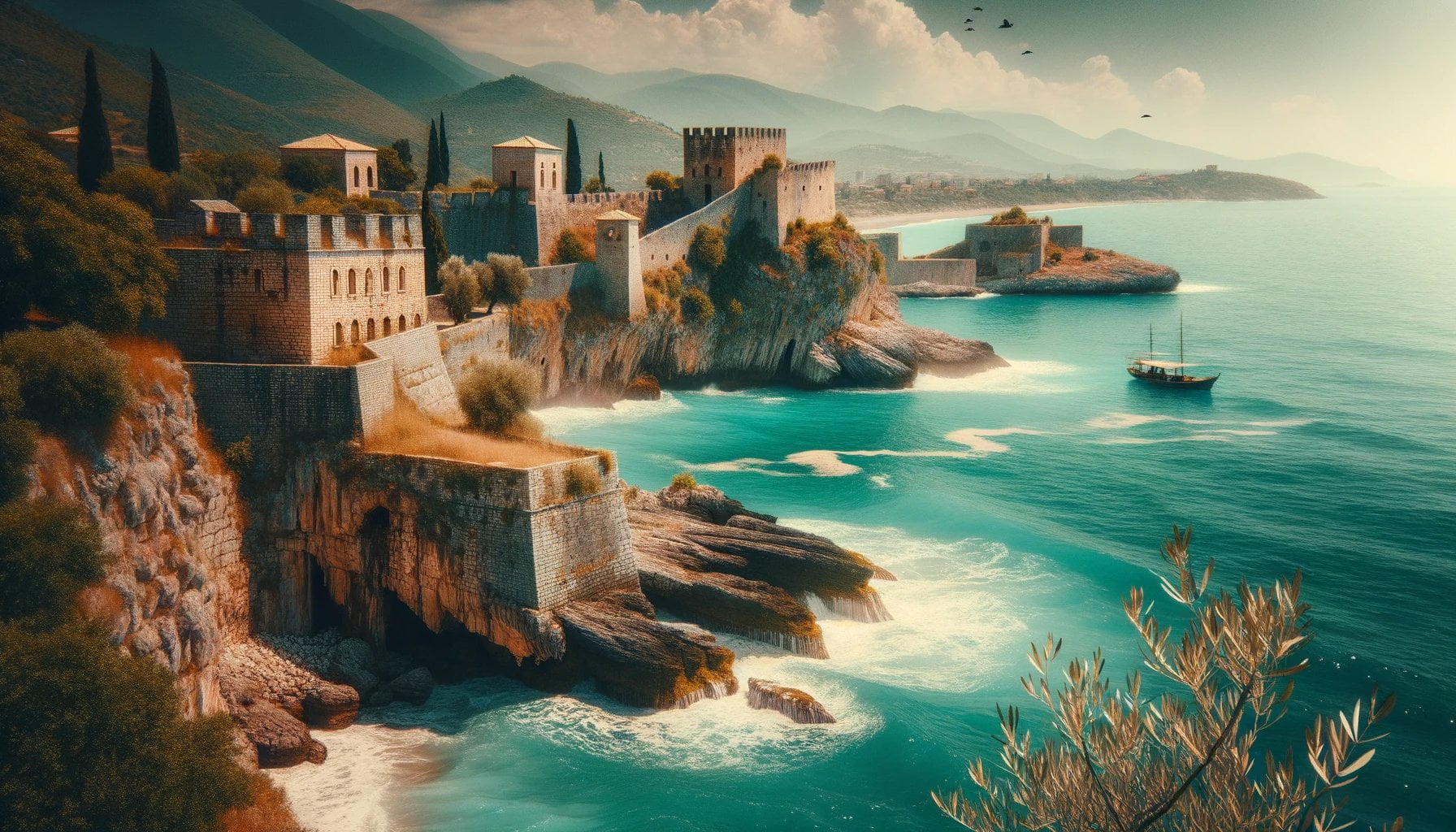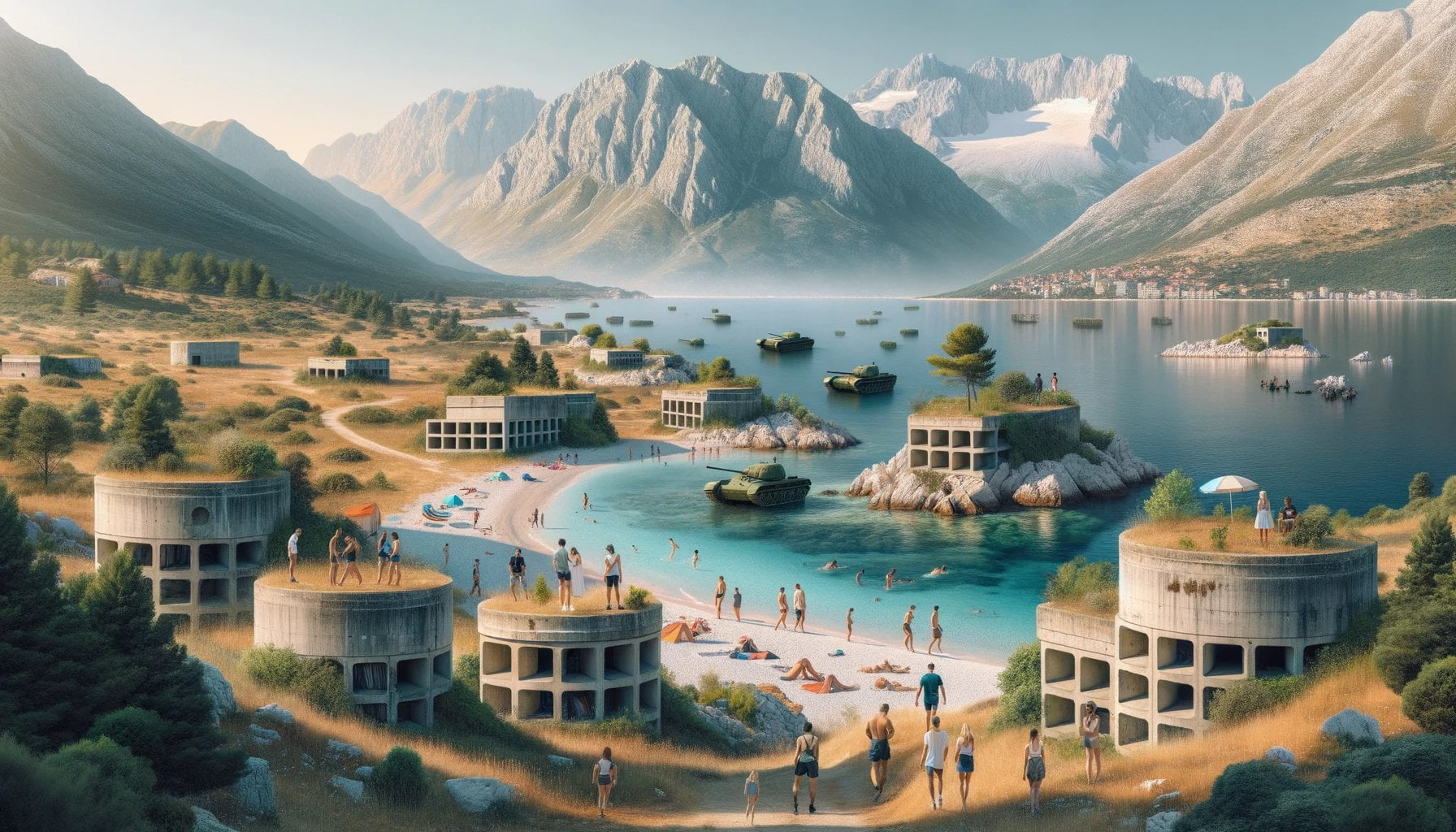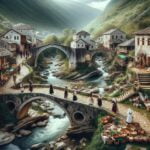Uncover the hidden treasures of Albania with our captivating article, titled “Fascinating Facts About Albania: Unveiling Its History, Landscapes, and Traditions.” From the enchanting tradition of Xhiro, evening walks through bustling streets, to the intriguing concept of stuffed animals as guardians, this piece delves into the rich cultural heritage of Albania. Discover Butrint, the country’s most significant ruins, and delve into the vibrant history of King Zog I, Albania’s one and only monarch. Prepare to be enthralled by the stunning landscapes, historical wonders, and vibrant traditions that make Albania a truly unique destination.

Key Takeaways:
- Only 3 million people live in Albania.
- Mother Teresa is considered a national heroine in the country.
- The majority of Albanians practice Islam.
- Albania was the first atheist state in the world in 1967.
- The current Republic of Albania is the fourth republic established in the country.
- Albania ranks fourth in reduced unemployment rates among Balkan nations.
- Primary and secondary education in Albania is free.
- Albania is an upper middle-income economy.
- The service sector is the dominant industry in Albania, followed by the industrial and agricultural sectors.
- The capital city of Albania is Tirana.
- The currency used in Albania is Lek (ALL).
- Islam is the main religion in Albania.
- Albanian cuisine is influenced by the Mediterranean and features dishes like burek and tavë kosi.
- There are more Albanians living outside of Albania than within, with a significant diaspora in countries like Kosovo, Macedonia, Montenegro, Greece, Turkey, Italy, Germany, Switzerland, Sweden, and the United States.
Facts About Albania: Unveiling Its History, Landscapes, and Traditions
Population and Religion
- Albania, a hidden gem in Southeast Europe, is home to approximately 3 million people.
- The majority of Albanians practice Islam, making it the main religion in the country.
Religious Transformation
- In an intriguing turn of events, Albania declared itself as the first atheist state in the world in 1967.
- This declaration marked a significant shift for a nation that had been historically influenced by religious practices.
Political Evolution
- The current Republic of Albania is the fourth republic established in the country, highlighting its dynamic political history.
Economic Progress
- Despite its relatively small population, Albania has managed to achieve an upper middle-income economy status.
- The country has experienced a substantial decrease in unemployment rates, placing fourth among nations in the Balkans.
- The service sector is the dominant force in Albania’s economy, followed by the industrial and agricultural sectors.
Education and Welfare
- Albania provides free primary and secondary education, ensuring that its citizens have access to knowledge and opportunities.
- The nation’s commitment to education contributes to its social development and the growth of its younger generations.
Capital and Currency
- The bustling capital city of Albania is Tirana, a vibrant hub of culture and history.
- The official currency of Albania is the Lek (ALL), which supports the nation’s thriving economy.
Cuisine and Cultural Influences
- Albanian cuisine is a delightful fusion of Mediterranean flavors, with dishes like burek and tavë kosi capturing the essence of the country’s culinary traditions.
- These delectable delicacies reflect the influence of both neighboring cuisines and local agricultural practices.
Albanians Beyond Borders
- It is fascinating to note that there are more Albanians living outside of Albania than within its borders.
- Approximately 7 to 10 million Albanians have made their homes in various countries, such as Kosovo, Macedonia, Montenegro, Greece, Turkey, Italy, Germany, Switzerland, Sweden, and the United States.
Source: WorldAtlas and The Fact File
Albania is known for its diverse culture, ranging from its beautiful landscapes to its rich history. If you want to explore the vibrant tourism in Albania, click here to discover the hidden gems of this enchanting country.
Immerse yourself in the fascinating Albania culture by indulging in its traditional music, dance, and art. Click here to dive into the vibrant world of Albanian traditions.
Delve into the captivating Albania history and uncover the stories of ancient civilizations. Click here to embark on a historical journey through centuries of fascinating events.
Experience the awe-inspiring beauty of famous places in Albania, from breathtaking mountains to stunning beaches. Click here to explore the must-visit destinations that will leave you in awe.
Savor the flavors of Albania cuisine, renowned for its Mediterranean influences and unique culinary delights. Click here to discover the mouthwatering dishes that will tantalize your taste buds.
Butrint – Albania’s Most Significant Ruins
Key Takeaways:
– Butrint is an archaeological national park in Albania, known for its ancient ruins dating back to the 7th century BC Bronze Age.
– It holds immense cultural, environmental, and historical value, making it the most important archaeological park in Albania.
– Butrint is part of a 29 sq km national park, offering a fantastic natural setting in addition to its ruins.
– The park houses well-preserved ancient buildings, including the impressive Butrint theatre that could seat over 2500 people.
– Visitors can also explore the museum within the castle, which displays artifacts from the Butrint archaeological park.
– The ruins in Butrint span a variety of periods, covering 2500 years of history and showing the influences of the Greeks, Romans, and Byzantines.
– The park’s special atmosphere is created by a unique combination of archaeology, monuments, and natural beauty.
– Butrint National Park is a popular tourist destination, located approximately 20km from the modern city of Saranda.
Located in Albania, Butrint is an archaeological national park that is home to some of the most significant ruins in the country. This UNESCO World Heritage site has a rich history dating back to the 7th century BC Bronze Age, making it a captivating destination for history enthusiasts. Butrint is not just a collection of ancient ruins; it is a place where cultural, environmental, and historical value intertwine to create a remarkable experience.
Butrint National Park is a sprawling 29 sq km area that offers visitors a fantastic natural setting to explore alongside its archaeological wonders. As you wander through the park, you’ll come across well-preserved ancient buildings that showcase the architectural prowess of past civilizations. One standout structure is the Butrint theatre, an impressive amphitheater that could seat over 2500 people.
To enhance your understanding of the site, be sure to visit the museum within the castle. Here, you’ll find a wide range of artifacts from the Butrint archaeological park, providing insights into the lives and cultures of the people who once inhabited the area.
The ruins in Butrint span a variety of periods, spanning an incredible 2500 years. From Greek to Roman to Byzantine influences, the remnants of these civilizations are preserved in this archaeological park. Walking through the ruins, you can’t help but feel a connection to the past and marvel at the enduring legacy left behind by those who came before us.
What sets Butrint National Park apart is its ability to seamlessly blend archaeology, monuments, and natural beauty. The combination of ancient ruins, stunning landscapes, and a serene ambiance creates a truly special atmosphere that envelops visitors. Whether you’re a history buff, nature lover, or simply seeking a unique experience, Butrint National Park is sure to captivate you.
With its cultural significance, historical value, and breathtaking surroundings, it’s no wonder that Butrint National Park has become a popular tourist destination in Albania. Located just 20km from the modern city of Saranda, it offers visitors the opportunity to delve into the country’s rich past while enjoying the natural beauty that surrounds them.
For more information about Butrint and its fascinating history, you can visit the following websites:
- Website 1: History Hit
- Website 2: The Albanian Riviera, Albania | Butrint
King Zog I – the first and only King of Albania
King Zog I, also known as Ahmed Muhtar bey Zogolli, holds a significant place in the history of Albania. He was a prominent leader who served as Albania’s prime minister, president, and ultimately became the country’s first and only king from 1922 to 1939.
Early Life and Rise to Power
Born in 1895 in Burgajet Castle, near Burrel in northern Albania, Zogolli came from a noble family with claims of descent from Skanderbeg, Albania’s national hero. His involvement in politics began after Albania declared its independence in 1912. Zogolli served in various positions, including Governor of Shkodër, Minister of the Interior, and Chief of the Albanian military.
A Reign Filled with Challenges
Zogolli faced numerous assassination attempts and a staggering 600 blood feuds during his reign. Despite these challenges, he successfully transformed Albania into a kingdom in 1928 and became King Zog I. The fascist government of Italy supported Zog, leading to increased Italian influence in Albanian affairs.
Accomplishments and Reforms
During his administration, Zog I enacted major reforms in Albania and enjoyed strong relations with Italy. He held sweeping executive and legislative powers after being officially elected as the first President of Albania in 1925. His dedication to modernization and progress brought about significant changes in the country.
Exile and Legacy
With the onset of World War II, Zog I and his royal family were forced to flee to Greece. Despite the challenges he faced, Zog I characteristically referred to Hitler and Mussolini as madmen. He spent the rest of his life in exile in France and passed away in 1961.
Key Takeaways:
– King Zog I served as Albania’s prime minister, president, and the country’s first and only king from 1922 to 1939.
– His reign was marked by numerous assassination attempts and blood feuds.
– Zogolli played a crucial role in transforming Albania into a kingdom in 1928.
– He enacted major reforms and had strong relations with Italy.
– Zog I and his royal family went into exile during World War II and he passed away in France in 1961.
Sources:
– Wikipedia: Zog I of Albania

FAQ
Q1: What is Xhiro, and why is it a tradition in Albania?
A1: Xhiro is a tradition of evening walks in Albania. It is a popular activity where people gather and stroll through the streets, parks, and promenades. It is a way for Albanians to socialize, exercise, and enjoy the fresh air after dinner.
Q2: What do stuffed animals represent in Albanian culture?
A2: Stuffed animals are believed to have a protective role in Albanian culture. They are often placed in cribs, bedrooms, or cars to guard against evil spirits and bring good luck. It is a tradition passed down through generations, symbolizing the belief in the power of these animals to keep away negative energy.
Q3: What makes Butrint significant in Albania’s history?
A3: Butrint is Albania’s most significant ruins and an archaeological national park. It holds immense cultural, environmental, and historical value. Its ancient ruins date back as far as the 7th century BC Bronze Age and have been occupied by the Greeks, Romans, and Byzantines. Butrint is considered the most important archaeological park in Albania.
Q4: Who was King Zog I, and why is he significant in Albanian history?
A4: King Zog I, born as Ahmed Muhtar bey Zogolli, was the first and only King of Albania. He served as Albania’s prime minister, president, and eventually became the king from 1922 to 1939. Zog faced numerous assassination attempts and blood feuds during his reign. His administration enacted major reforms and had strong relations with Italy, although he later fled during World War II.
Q5: Where can I find more information about King Zog I of Albania?
A5: More information about King Zog I of Albania can be found on Wikipedia’s page titled “Zog I of Albania” and on Biography.com’s page dedicated to the king. These sources provide details about his life, political career, and his role in Albanian history.















